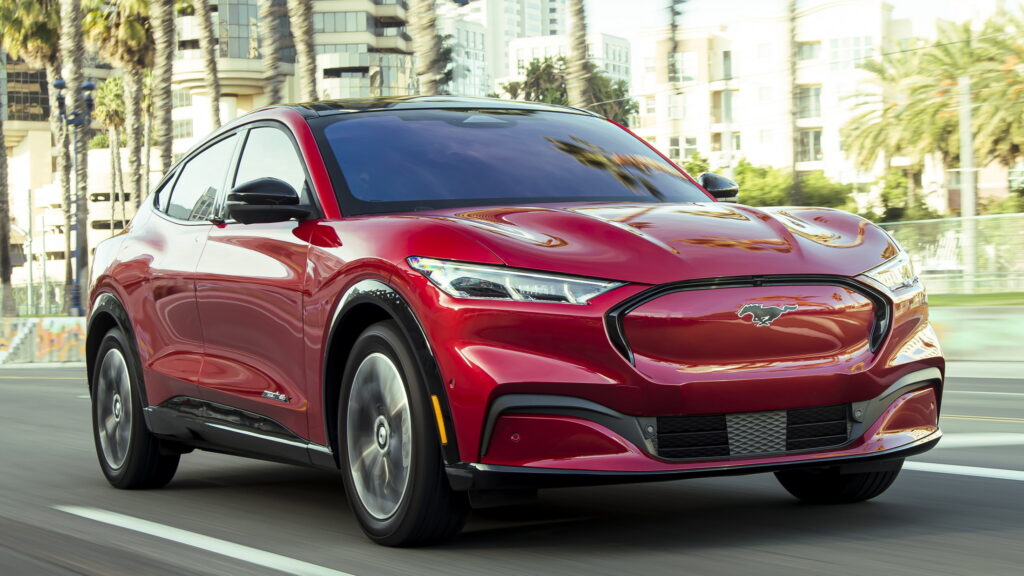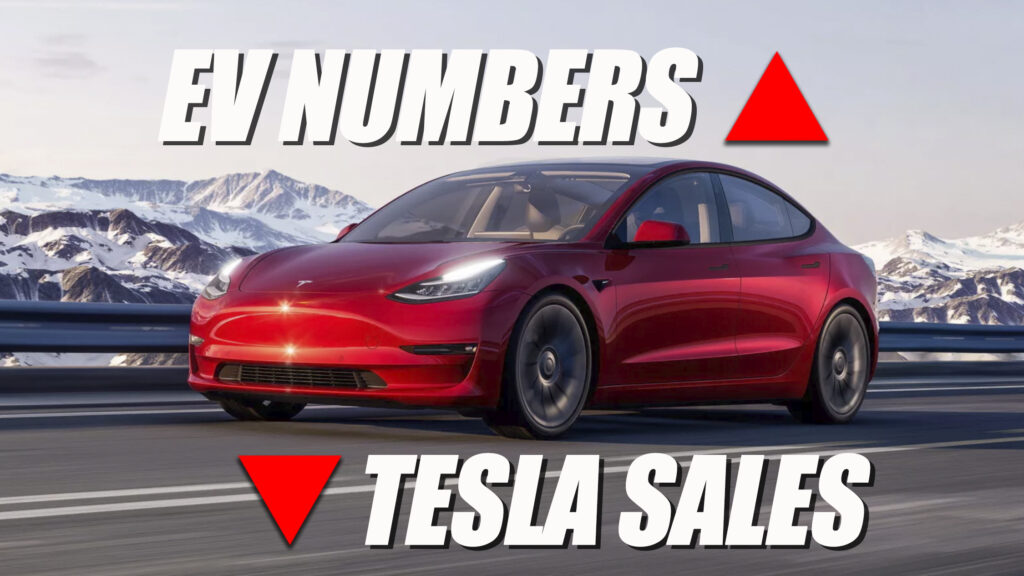- Tesla registrations fell by 12 percent in March for the second consecutive month.
- Overall EV registrations rose by 3.8 percent, while non-Tesla brands increased by 28 percent.
- Ford tripled its EV registrations in March, while Hyundai and Kia doubled them.
Sales of new battery-electric vehicles saw a slight increase at the end of the first quarter, but according to the latest information from S&P Global Mobility, new Tesla registrations have dropped for the second consecutive month.
With competition in the U.S. EV market growing by the month, Tesla has seen a downturn in new car registrations. And even after multiple price cuts, it would appear that cheaper sticker prices aren’t enough to arrest the downward trend.
Read: More Than 1 In 10 New Cars Sold In EU Were EVs In April
The data shows that Tesla’s slice of the U.S. new EV pie has shrunk from 61.5 percent in March 2023 to 52.4 percent for the same month this year. The 12 percent drop in new registrations isn’t quite as bad as in February, which witnessed a 25 percent decline in registrations from the year prior. Tesla has dominated the electric vehicle market in the U.S., for years, accounting for 80 percent of sales in 2020.
Registration data is the best way to measure EV adoption, as Tesla doesn’t individually account for U.S. sales, and some automakers don’t report EV sales by model.
U.S. EV Sales March 2024
While Tesla is in no danger of losing market-leader status just yet, there should be no cause for panic from the greater EV fold. While it’s true that the EV market has cooled since it recorded a 52 percent gain in the 2023 calendar year, March still signaled growth that is somewhat skewed by Tesla’s decline. Although total EV registrations in the U.S. rose by a meager 3.8 percent to 96,385, the increase in EV sales from non-Tesla brands was a rather impressive 28 percent.
Ford is up, but still way behind Tesla
So, who exactly is capturing that extra market share from Tesla? Well, while Ford still significantly trails Elon Musk’s car company (8,418 vs. 50,474), the Blue Oval’s EV registrations were still triple what they were the year before. Growth was driven by four times more Mustang Mach-E’s being registered in March 2024 vs March 2024, while the F-150 Lightning was the best-selling EV pickup.
Hyundai and Kia saw strong growth, too, doubling their EV registration numbers. Iconic 5 sales were up by 53 percent, and Kia’s newly launched EV9 helped bolster numbers. Meanwhile, BMW (with the new i5) and Mercedes-Benz (with the EQE and EQS crossovers) managed double-digit growth.
According to the report by Auto News, Tom Libby, associate director of industry analysis at S&P Global Mobility, thinks Tesla may be able to fight back soon. Telsa reported that first-quarter deliveries were tight as production was ramped up on the refreshed Model 3, the second most popular car in their lineup. April also saw the launch of a new Model 3 version that takes advantage of the federal EV incentive, which was lost in January due to stricter battery sourcing regulations.





